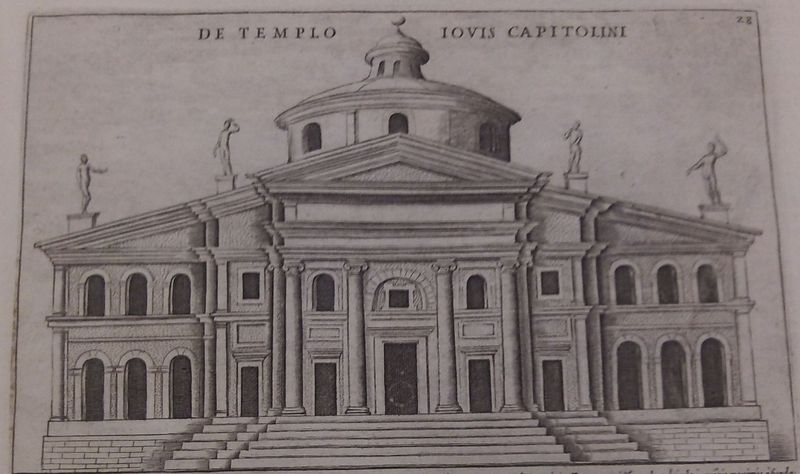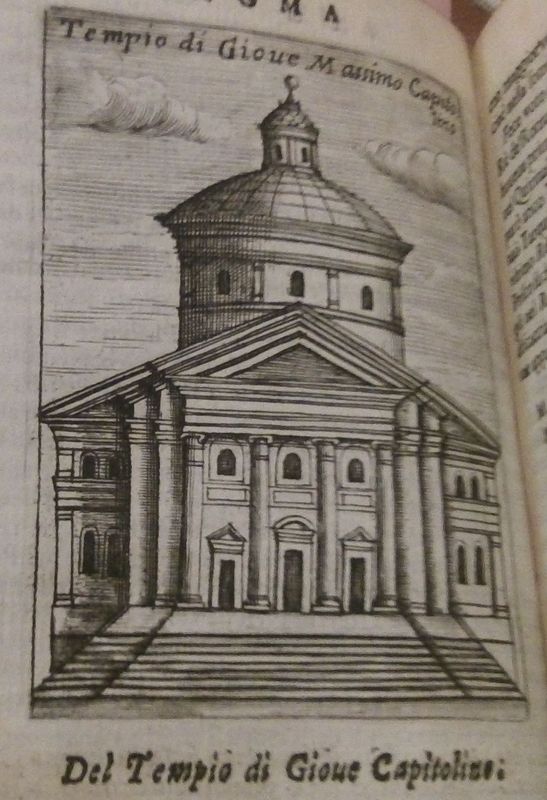17th Century Representations

Giacomo Lauro's depiction of the Temple of Jupiter Capitolinus, from Splendore dell’antica e moderna Roma (Rome, 1641), Special Collections, Wellesley College.

Filippo de Rossi's depiction of the Temple of Capitoline Jove, from Ritratto di Roma antica (Rome, 1689), Special Collections, Wellesley College.
Interest in the Temple of Jupiter faded in the centuries after its destruction, but several different artists represented the Temple in the 17th century. Each of these artists was imagining the monument. Giacomo Lauro takes a particularly elaborate approach.1 The figures on the roof are consistent with coin depictions from more contemporary sources, but the Temple has gained an additional dome, archways and doors. The quadriga (four-horse chariot) sculpture seems to be missing, and though the three cellae (temple chambers) are not quite as distinct, there appear to be three distinct parts of the building. Cult-statues inside the Temple are not visible, as they were on some coins. Filippo de Rossi’s depiction contains many of the same elements as Lauro's etching, although he does not include any figures on the roof, and the dome is taller and narrower.2
_________________
1 Giacomo Lauro, Splendore dell’antica e moderna Roma (Roma: Nella Stamparia d’Andrea Fei, 1641), Special Collections, Wellesley College.
2 Filippo de Rossi, Ritratto di Roma antica: formata nuovamente, con le auttorita, di Bartolomeo Marliani, del P. Alessandro Donati, di Famiano Nardini, e d’altri celebri antiquarii, accennati nell’episotla al lettore (Rome: M. Rossi, 1689), Special Collections, Wellesley College.